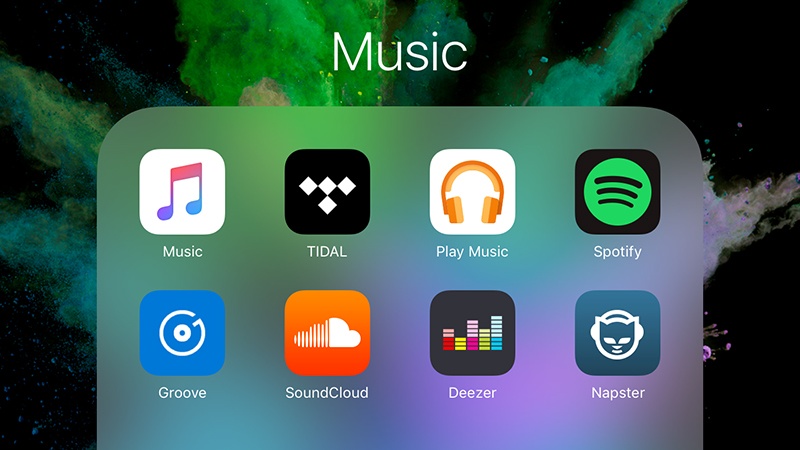How beneficial to artists is music streaming?
by Archie Buse, on Feb 14, 2018 11:03:05 AM
Streaming, a format making music more accessible than ever, allows artists (signed and unsigned alike) an opportunity to project their voices to an extent unforeseen in the vinyl era. But it’s always been a grey, subjective area on how effective streaming is for an artist to create a livelihood when compared to the conventional physical or digital album sales.

Just how beneficial is streaming to artists?
It is now possible for songs to reach audiences of enormous sizes, as shown by Ed Sheeran’s ‘Shape of You’, Spotify’s most streamed song with 1.6 billion streams. But this is just one example using the most streamed artist of 2017; what about those that don’t have such a large following, or those that are not signed to labels that have the promotional capability of Atlantic or Warner?
70% of the income from streaming platforms is paid to the labels that manage the artists, so it could be said that it is the labels who are exploiting the artists; streaming platforms want labels to allow their artists' catalogues to be used, and in turn platforms will push good deals towards the labels so each side wins. But in a world of increasing fairness for workers, should we not also be making sure that pay for music is increasing?
Artists do not have to make their work available for streaming, but with music piracy a constant threat, and new artists being rushed into exploitative record deals, it seems the alternative would be dire. A report by the blog ‘Information is Beautiful’ compared the revenue for artists from each streaming service, showing that the best paying platform (Napster) was still a measly $0.0167 per stream. In second place (Tidal) was an even lower $0.0110 per stream.
These two platforms have 9 million users combined, which is only a margin of listeners compared to other platforms. This may be why they pay artists at a higher rate; they need to gain more users, so enticing artists by paying more and allowing exclusive deals. Tidal gave a two-week exclusive listen to Kanye Wests ‘The Life of Pablo’ on release, and also are the only service streaming Jay Z’s whole catalogue (this may also be due to Tidal being owned by Jay Z).
Apple Music, who entered the industry much more recently than Spotify, also host exclusives - from Frank Ocean, Drake and Taylor Swift. But does such exclusivity not decrease an artist's overall revenue? These albums will possibly be choked of their #1 spot on the chart due to restrictions.
Back in the ‘golden days’ of physical releases, it was necessary for a consumer to purchase a whole album to listen to particular songs, costing around $12. After this the vinyl, tape or CD could be played to the hearts content, until it inevitably gets dropped or chewed up my a faulty player (in which case the album will be purchased again).
The difference in modern times is that music is no longer as much of an album experience, most listeners just listen to the hits off of an album, not listening to it as it was originally showcased.
This means that instead of whole albums being purchased, individual songs are streamed, so is this creating as much worth for the artists?
If an album cost $12, it is likely the artist would get around $1.20 from the label, making each track on a CD of ten songs being worth $0.12. If a musician receives $0.0038 from Spotify per stream, it means a track would need to be played 32 times to equal the remuneration from a physical recording.
Looking through my personal Spotify library, I can see that most songs from albums I would have liked enough to purchase in physical form have most definitely received over 31 streams, perhaps some tracks even reaching over 100 streams.
Before listening to individual tracks was possible, it meant the artist could make an album full of mostly ‘filler’ songs. However, in order to maximize revenue now it means an artist has to put more effort into each track in order to keep that individual popularity at a high; if they aren’t releasing songs with record breaking streams, they will need a pretty consistent catalogue to earn enough to support themselves.
So what does the future hold?
Overall, my view is that streaming is better for the biggest artists: it allows them to reach a larger audience due to ease of access, cheaper prices, and tailored playlists that may suggest the music to listeners. This is also the case for smaller artists, but they may not receive enough streams to warrant the revenue that would have come with selling a physical release.
It is still clear that labels need to reconsider their fairness to artists, or else artists can take a stand like Chance the Rapper, who with his recent album ‘Coloring Book’ gained a number one Rap album Grammy. This was despite being a streaming-only album, a format that has the potential to be a more regular occurrence in the future.










